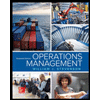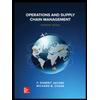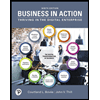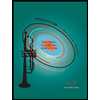In preparing for the upcoming holiday season, Fresh Toy Company (FTC) designed a new doll called The Dougie that teaches children how to dance. The fixed cost to produce the doll is $100,000. The variable cost, which includes material, labor, and shipping costs, is $29 per doll. During the holiday selling season, FTC will sell the dolls for $37 each. If FTC overproduces the dolls, the excess dolls will be sold in January through a distributor who has agreed to pay FTC $10 per doll. Demand for new toys during the holiday selling season is extremely uncertain. Forecasts are for expected sales of 60,000 dolls with a standard deviation of 15,000. The normal probability distribution is assumed to be a good description of the demand. FTC has tentatively decided to produce 60,000 units (the same as average demand), but it wants to conduct an analysis regarding this production quantity before finalizing the decision. (a) Determine the equation for computing FTC's profit for given values of the relevant parameters (e.g., demand, production quantity, etc.). Using this equation, compute FTC's profit (in dollars) when realized demand is equal to 60,000 (the average demand). $ (b) Modeling demand as a normal random variable with a mean of 60,000 and a standard deviation of 15,000, simulate the sales of the Dougie doll using a production quantity of 60,000 units. What is the estimate of the average profit (in dollars) associated with the production quantity of 60,000 dolls? (Use at least 1,000 trials. Round your answer to the nearest integer.) $ (c) Compare the average profit estimated by simulation in part (b) to the profit calculation in part (a).
In preparing for the upcoming holiday season, Fresh Toy Company (FTC) designed a new doll called The Dougie that teaches children how to dance. The fixed cost to produce the doll is $100,000. The variable cost, which includes material, labor, and shipping costs, is $29 per doll. During the holiday selling season, FTC will sell the dolls for $37 each. If FTC overproduces the dolls, the excess dolls will be sold in January through a distributor who has agreed to pay FTC $10 per doll. Demand for new toys during the holiday selling season is extremely uncertain. Forecasts are for expected sales of 60,000 dolls with a standard deviation of 15,000. The normal probability distribution is assumed to be a good description of the demand. FTC has tentatively decided to produce 60,000 units (the same as average demand), but it wants to conduct an analysis regarding this production quantity before finalizing the decision. (a) Determine the equation for computing FTC's profit for given values of the relevant parameters (e.g., demand, production quantity, etc.). Using this equation, compute FTC's profit (in dollars) when realized demand is equal to 60,000 (the average demand). $ (b) Modeling demand as a normal random variable with a mean of 60,000 and a standard deviation of 15,000, simulate the sales of the Dougie doll using a production quantity of 60,000 units. What is the estimate of the average profit (in dollars) associated with the production quantity of 60,000 dolls? (Use at least 1,000 trials. Round your answer to the nearest integer.) $ (c) Compare the average profit estimated by simulation in part (b) to the profit calculation in part (a).
Practical Management Science
6th Edition
ISBN:9781337406659
Author:WINSTON, Wayne L.
Publisher:WINSTON, Wayne L.
Chapter2: Introduction To Spreadsheet Modeling
Section: Chapter Questions
Problem 20P: Julie James is opening a lemonade stand. She believes the fixed cost per week of running the stand...
Related questions
Question

Transcribed Image Text:In preparing for the upcoming holiday season, Fresh Toy Company (FTC) designed a new doll called The Dougie that teaches children how to dance. The fixed cost to produce the doll is $100,000. The variable cost, which includes material,
labor, and shipping costs, is $29 per doll. During the holiday selling season, FTC will sell the dolls for $37 each. If FTC overproduces the dolls, the excess dolls will be sold in January through a distributor who has agreed to pay FTC $10 per
doll. Demand for new toys during the holiday selling season is extremely uncertain. Forecasts are for expected sales of 60,000 dolls with a standard deviation of 15,000. The normal probability distribution is assumed to be a good
description of the demand. FTC has tentatively decided to produce 60,000 units (the same as average demand), but it wants to conduct an analysis regarding this production quantity before finalizing the decision.
(a) Determine the equation for computing FTC's profit for given values of the relevant parameters (e.g., demand, production quantity, etc.).
Using this equation, compute FTC's profit (in dollars) when realized demand is equal to 60,000 (the average demand).
$
(b) Modeling demand as a normal random variable with a mean of 60,000 and a standard deviation of 15,000, simulate the sales of the Dougie doll using a production quantity of 60,000 units.
What is the estimate of the average profit (in dollars) associated with the production quantity of 60,000 dolls? (Use at least 1,000 trials. Round your answer to the nearest integer.)
$
(c) Compare the average profit estimated by simulation in part (b) to the profit calculation in part (a).
The average profit from the simulation is less than the profit computed in part (a).
The average profit from the simulation is greater than the profit computed in part (a)
Explain why they differ.
Since the demand is being modeled as a normal random variable, the sample mean profit will always tend to be lower than the true mean profit.
Profit is limited by the production quantity, so lower than average demand does not correspond to lower profits, but higher demand will lead to higher
profits.
Since the demand is being modeled as a normal random variable, the sample mean profit will always tend to be higher than the true mean profit.
Profit is limited by the production quantity, so higher than average demand does not correspond to higher profits, but lower demand will lead to lower
profits.

Transcribed Image Text:(d) Before making a final decision on the production quantity, management wants an analysis of a more aggressive 70,000-unit production quantity and a more conservative 50,000-unit production quantity. Run your simulation with
these two production quantities. (Use at least 1,000 trials. Round your answers to the nearest integer.)
What is the mean profit (in dollars) associated with 50,000 units?
$
What is the mean profit (in dollars) associated with 70,000 units?
$
(e) In addition to mean profit, what other factors should FTC consider in determining a production quantity? (Select all that apply.)
☐ >
probability of a shortage
profit standard deviation
gut feeling
stock market
probability of a loss
Expert Solution
This question has been solved!
Explore an expertly crafted, step-by-step solution for a thorough understanding of key concepts.
This is a popular solution!
Step 1: Examine - Given details:
VIEWStep 2: a) Calculate - Net Profit:
VIEWStep 3: b) Calculate - Average Profit:
VIEWStep 4: c) Compare - Profit:
VIEWStep 5: d) Calculate - Average profit - 50000 Units:
VIEWStep 6: d) Calculate - Average profit - 70000 Units:
VIEWStep 7: e) Examine - Production quantity:
VIEWSolution
VIEWTrending now
This is a popular solution!
Step by step
Solved in 8 steps with 9 images

Recommended textbooks for you

Practical Management Science
Operations Management
ISBN:
9781337406659
Author:
WINSTON, Wayne L.
Publisher:
Cengage,

Operations Management
Operations Management
ISBN:
9781259667473
Author:
William J Stevenson
Publisher:
McGraw-Hill Education

Operations and Supply Chain Management (Mcgraw-hi…
Operations Management
ISBN:
9781259666100
Author:
F. Robert Jacobs, Richard B Chase
Publisher:
McGraw-Hill Education

Practical Management Science
Operations Management
ISBN:
9781337406659
Author:
WINSTON, Wayne L.
Publisher:
Cengage,

Operations Management
Operations Management
ISBN:
9781259667473
Author:
William J Stevenson
Publisher:
McGraw-Hill Education

Operations and Supply Chain Management (Mcgraw-hi…
Operations Management
ISBN:
9781259666100
Author:
F. Robert Jacobs, Richard B Chase
Publisher:
McGraw-Hill Education


Purchasing and Supply Chain Management
Operations Management
ISBN:
9781285869681
Author:
Robert M. Monczka, Robert B. Handfield, Larry C. Giunipero, James L. Patterson
Publisher:
Cengage Learning

Production and Operations Analysis, Seventh Editi…
Operations Management
ISBN:
9781478623069
Author:
Steven Nahmias, Tava Lennon Olsen
Publisher:
Waveland Press, Inc.